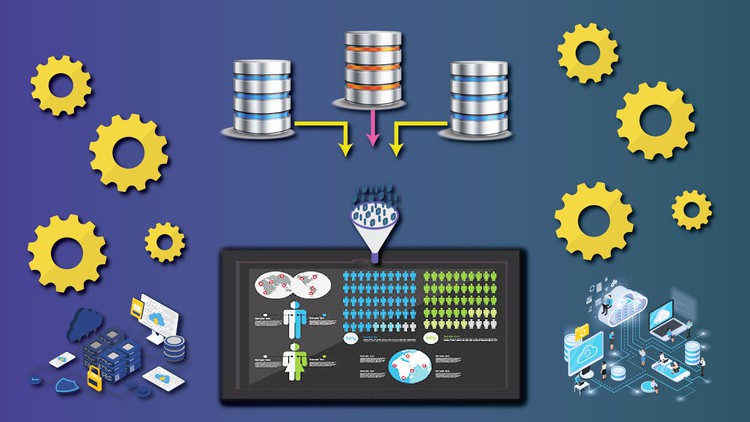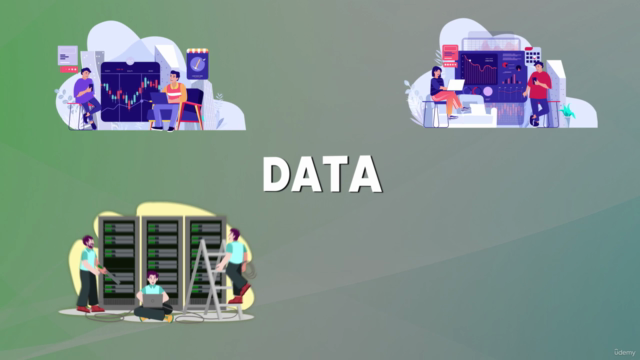CRISP-ML(Q) - Business Understanding and Data Understanding

Why take this course?
🎓 Course Title: CRISP-ML(Q) - Mastering Business & Data Understanding in Data Science
Headline: Unlock the Secrets of Data with CRISP-ML(Q) & EDA Using Python!
Course Description:
Embark on a journey to master the art of data science by understanding the intricacies of Data Science and Exploratory Data Analysis (EDA) through the lens of the CRISP-ML(Q) Project Management Methodology. This comprehensive course is designed for individuals eager to delve into the world of data science, which is a cornerstone in numerous industries today.
📊 Key Takeaways:
- Understanding Data Science: Gain insights into the multidisciplinary nature of data science, its applications, and the roles it plays in modern decision-making processes.
- CRISP-ML(Q) Mastery: Explore the six stages of CRISP-ML(Q), a standardized approach to ensure high-quality machine learning outcomes.
- Business & Data Understanding: Learn how to align data science projects with business objectives and understand data types, including continuous, discrete, qualitative, quantitative, and more.
- Data Preparation: Master the art of cleaning data, performing EDA using Python, and feature engineering to prepare your datasets for analysis.
- Model Building: Dive into various machine learning techniques, including supervised and unsupervised learning, and apply them in practical scenarios.
- Evaluation & Deployment: Understand how to evaluate the effectiveness of models and deploy them effectively in real-world applications.
- Monitoring & Maintenance: Learn to monitor data science projects post-deployment and perform necessary maintenance for optimal performance.
Course Structure:
-
Introduction to Data Science & CRISP-ML(Q)
- The role of data science in business today
- Overview of CRISP-ML(Q) methodology
-
Business and Data Understanding (Stage 1)
- Aligning data science initiatives with business goals
- Understanding the economic success criteria
- Navigating project charters and constraints
-
Data Acquisition & Preparation (Stage 2)
- Various types of data: Continuous, discrete, etc.
- Effective data collection methods
- Data version control and verification processes
-
Data Cleaning & EDA with Python (Stage 3)
- Comprehensive cleaning techniques: Typecasting, outlier treatment, and more
- Exploratory Data Analysis using Python: Measures of central tendency and dispersion
- Visualizations: Bar plots, Q-Q plots, box plots, histograms, and scatter plots
-
Feature Engineering (Stage 3 Continued)
- Transformations, standardization, and string manipulation
-
Model Building (Stage 4)
- Supervised and unsupervised learning techniques
- Machine learning algorithms: Linear regression, Decision-Tree, Naive Bayes, etc.
-
Model Evaluation (Stage 5)
- Assessing model performance through various metrics and validation techniques
-
Model Deployment (Stage 6)
- Strategies for deploying models in real-world settings
-
Monitoring & Maintenance (Stage 6 Continued)
- Ensuring the longevity and relevance of your data science projects
Why Take This Course?
- Practical Skills: Gain hands-on experience with Python, a key tool in data science.
- Real-World Application: Learn to apply CRISP-ML(Q) to real-world problems and datasets.
- Career Advancement: Equip yourself with the knowledge and skills that are highly sought after in today's job market.
- Collaborative Environment: Engage with a community of like-minded learners and professionals.
By completing this course, you will be well-equipped to tackle data science projects confidently, aligning your efforts with business objectives and delivering high-quality machine learning solutions. Join us on this transformational learning journey and elevate your career in the realm of data science! 🚀
Course Gallery




Loading charts...